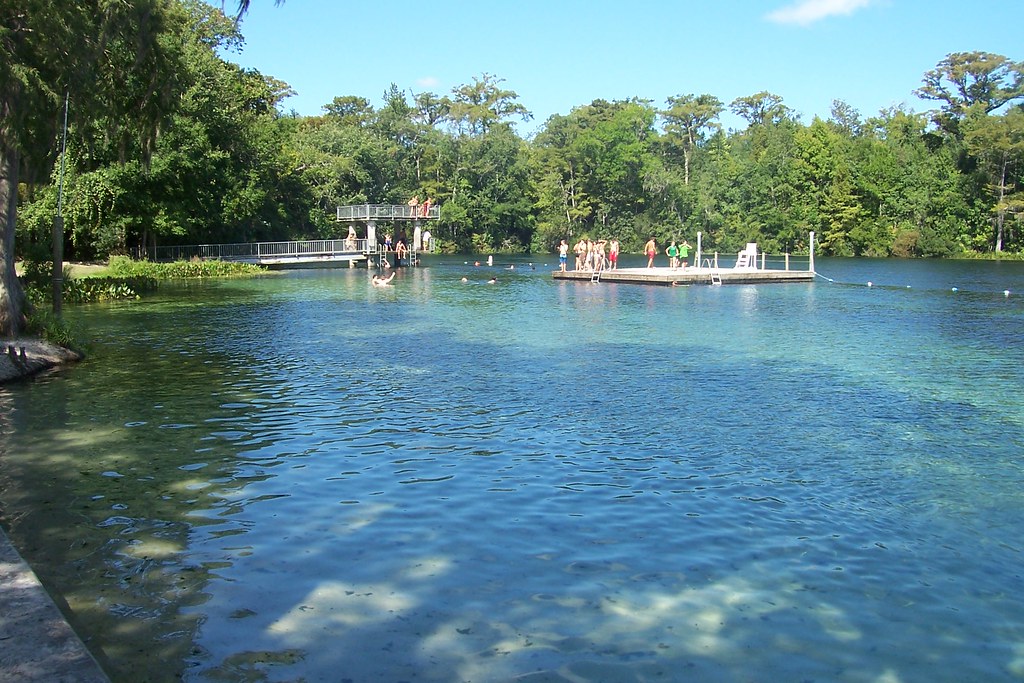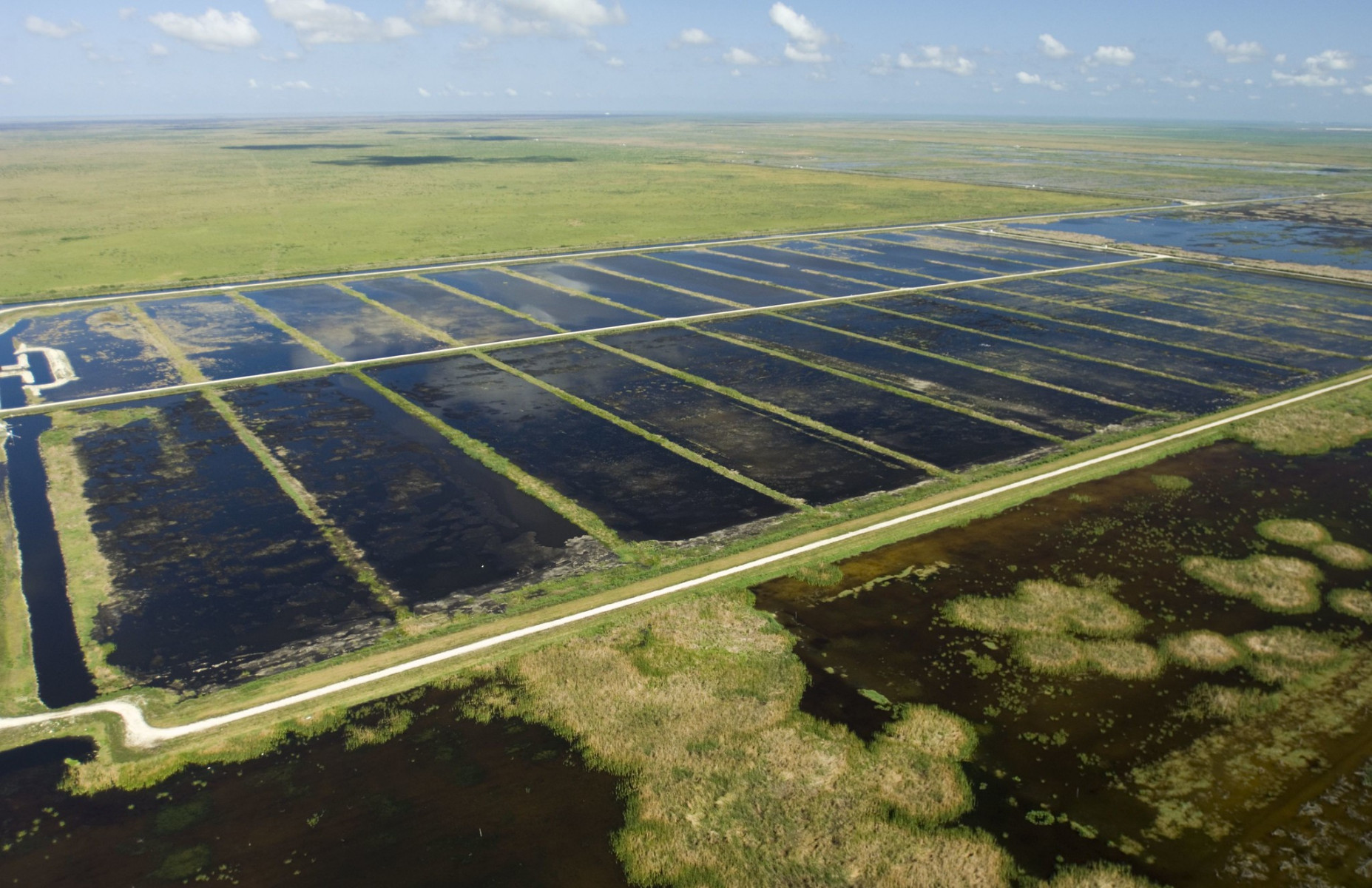
The Everglades play an important part in the water cycle of South Florida. (U.S. National Park Service)

The Everglades play an important part in the water cycle of South Florida. (U.S. National Park Service)
Despite being surrounded by water, Florida is drying up.
The Sunshine State’s underground freshwater reserves are being drained at an alarming rate, threatening the drinking water of millions, and severely damaging the complex ecosystem of the water cycle.
State and local governments already are working on solutions, but experts are calling for firmer action.
“If we just keep going the way we are going now, we are likely to be in trouble in the not too distant future,” said Todd Crowl, a professor at Florida International University in the Department of Biology and director of the Southeast Environmental Research Center.
“The supply is finite, but the access to it is not finite. It’s limitless,” said Robert Glennon, Regents’ Professor and Professor of Law and Public Policy at the University of Arizona. Glennon studies water policy around the world and believes that Florida is part of a greater water crisis in the U.S.
“We Americans are spoiled. We wake up in the morning, and we turn on the faucet and out comes as much as we want, for less than we pay for cell phone service or cable television,” Glennon said. “Most of our fellow citizens, when they think of water, if they think of it at all, they think of it as the air, infinite and inexhaustible, when for all practical purposes it is quite exhaustible, so we take it for granted.”
The associate director of the Florida Springs Institute, Heather Obara, said, “We have a lot of overpumping of our aquifer, meaning that the demand for water in Florida is really high, and we are using more water faster than our aquifer can replenish itself.
“We have a lot of water usage here in Florida, such as large scale agricultural usage, as well as urban residential usages that are depleting the aquifer at a rapid rate,” she said.
This depletion of groundwater is a problem throughout the state, with both southern and northern Florida experiencing shortages and environmental effects, according to The Florida Department of Environmental Protection. Many of Florida’s biodiverse ecosystems are dependent on freshwater to be clean of pollutants and at a certain water level to function.
The Florida DEP’s most recent water management assessment states that without new planning efforts, “existing sources of water will not adequately meet the reasonable-beneficial needs for the next 20 years.”
In North Florida, the natural springs are one of the best indicators of the health of the aquifers, Obara said. The freshwater flows up from the underground aquifers into these springs through cracks in the limestone.

The Florida Springs Institute, which studies North Florida’s aquifers, has documented a significant drop of freshwater flowing into springs. According to a study they conducted in 2018, average spring flows in Florida have declined by an estimated 32% from 1950 to 2010.
Another consequence of low flow in springs is that nitrogen is polluting the ecosystem. According to Obara, runoff inundated with nitrogen and phosphorus from agriculture and septic tanks is entering the water system, which shifts the balance of the whole ecosystem. Nitrogen is fuel for plant growth, and when there is an overabundance of nitrogen in the springs, there are massive algae blooms. Obara explains that without a strong flow, the springs cannot flush the algae out of the system, which ends up killing food sources for animals and disrupting the food chain.
“We thought we could just use and use that water, and now we’re dealing with the reality,” Obara said.
Unfortunately, the water crisis is not limited to North Florida. Statewide population growth has caused more and more land to be claimed for residential use. And local governments continue to authorize the drilling of new wells — and to expand development into swamps, despite the wetlands acting as a filter for water entering the aquifer.
Like the springs in North Florida, the Everglades — a UNESCO World Heritage Site and a designated International Biosphere Reserve — is an integral part of South Florida’s water cycle. The Everglades plays a vital role in the delicate equilibrium required to maintain the aquifers by keeping a pressure counterbalance against saltwater pushing its way into the aquifer, said Crowl, the Florida International University professor. As the water drains out of the aquifer and the Everglades, saltwater begins to intrude into freshwater reserves.
“It’s just a simple pressure problem,” Crowl said. But the problem is only worsened by rising sea levels, which are increasing the pressure, he said. Crowl studies the salinity of underground well water, sampling more than 100 wells throughout South Florida.
Crowl was not ready to make any predictions without continued monitoring in the future, but he did say “we are getting higher and higher concentrations in more and more of our wells where we measure saltwater intrusion. Watching the rate that’s happening is a little bit scary.”

The Florida Department of Environmental Protection is one of the multiple statewide government agencies that are studying the problem and collaborating with local governments to address the crisis.
In a report published in 2017, the DEP projected that between 2015 and 2035, the population in Florida will grow by 27%, to 25.2 million, and that public demand for water will increase by 23%.
The DEP has formulated a plan to address the increasing dependence on the aquifer. In the same 2017 study, they proposed 747 projects around the state to conserve water, costing $3.7 billion. The majority of the projects either use water reclamation or call for treatment of brackish groundwater.
But these projects seem to only treat the crisis, rather than address the underlying problem. Obara and Crowl both believe the most crucial step to addressing the crisis and eventually reverse it, is to commit to conserving the natural aquifer.
With one hand, Florida’s state and local governments seem committed to fixing the problem, but with the other hand, they continue to take actions that seemingly contradict that first commitment. The Miami-Dade County Commission recently approved the construction of American Dream Miami, a massive megamall, larger than the Mall of America in Minnesota. American Dream will have 2,000 hotel rooms, an indoor ski slope, an ice-climbing wall, and a water park with a “submarine lake.” The project is now working to secure environmental and water permits for the 174-acre site, which is a previously developed area adjacent to the Everglades.
“There really hasn’t been a good emphasis on conservation in Florida,” Obara said. “We need a shift in the mentality here in Florida that we haven’t had before. We have always looked at the environment as a resource rather than something that not only benefits our health for our environment to be healthy, but it also benefits our state’s economy.”
“The point is if we don’t get the Everglades restored pretty quickly to have freshwater to push back saltwater, we are going to be in a world of hurt,” Crowl said.
Glennon suggests using economics and policy as a possible solution. He believes if the government increases the price of water, the natural economic response will be to conserve the resource. “It is a matter of supply and demand,” he said.
Glennon still believes that access to water should be a human right, and suggests that 12-to-15 gallons per person, per day should be subsidized, avoiding penalizing those who cannot afford the price increase. Glennon also calls for reform within agriculture, proposing that farms need to change their methods.
“I think the farmers developed their farms at a time when water was plentiful, and they’re doing what they’ve always done, using water the same way,” Glennon said.
Florida’s water problem is complicated and challenging to fix, but the outlook is still positive. According to Crowl, it is possible to reverse saltwater intrusion, the health of the Everglades can be restored, and the aquifer can be allowed to refill. For Florida, there is still time to reverse the crisis.
“I am optimistic. Is there a crisis? You bet there is. But can we do something about it? Yes, and what we want to do is act before the crisis turns into a catastrophe,” Glennon said.